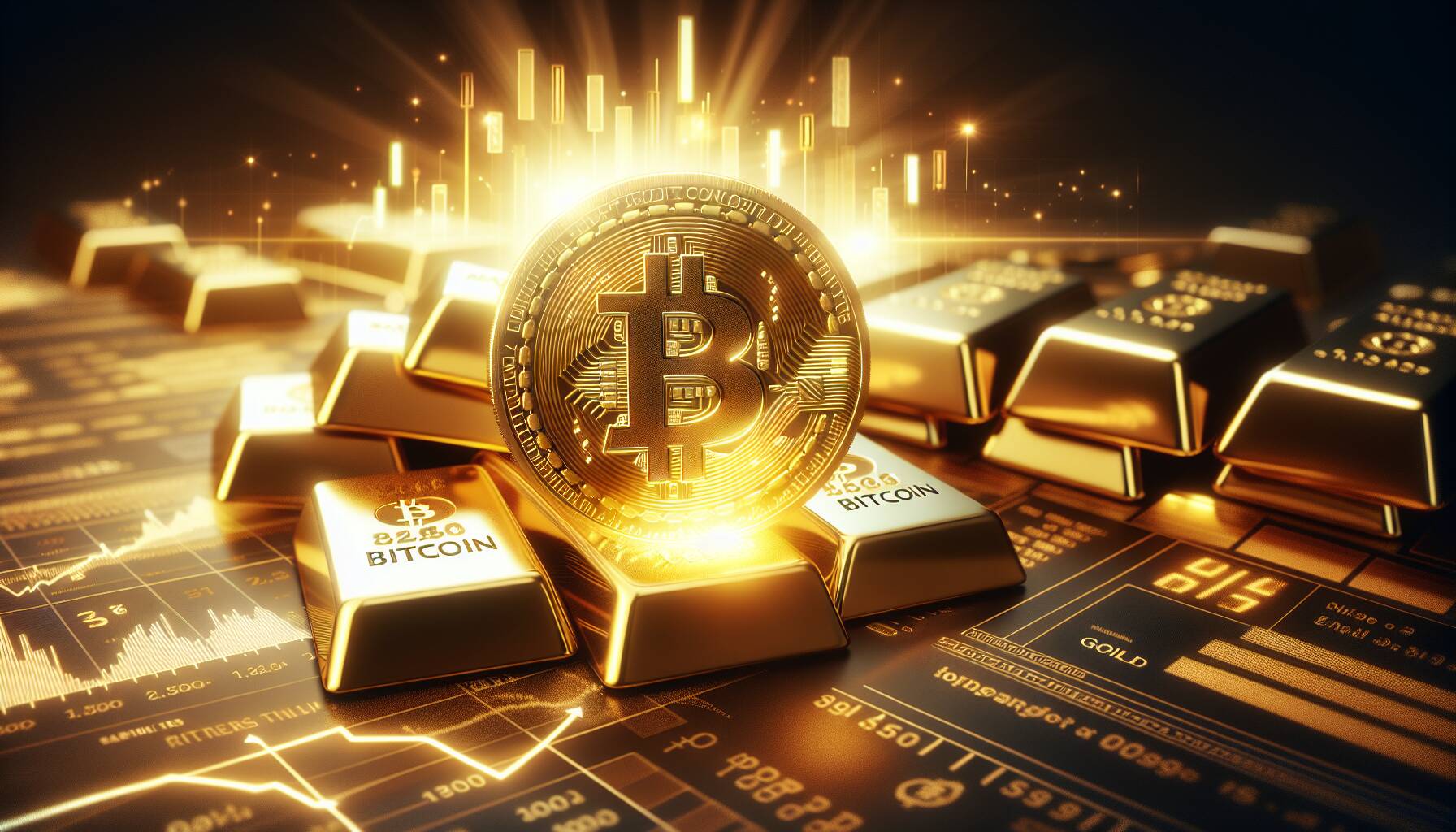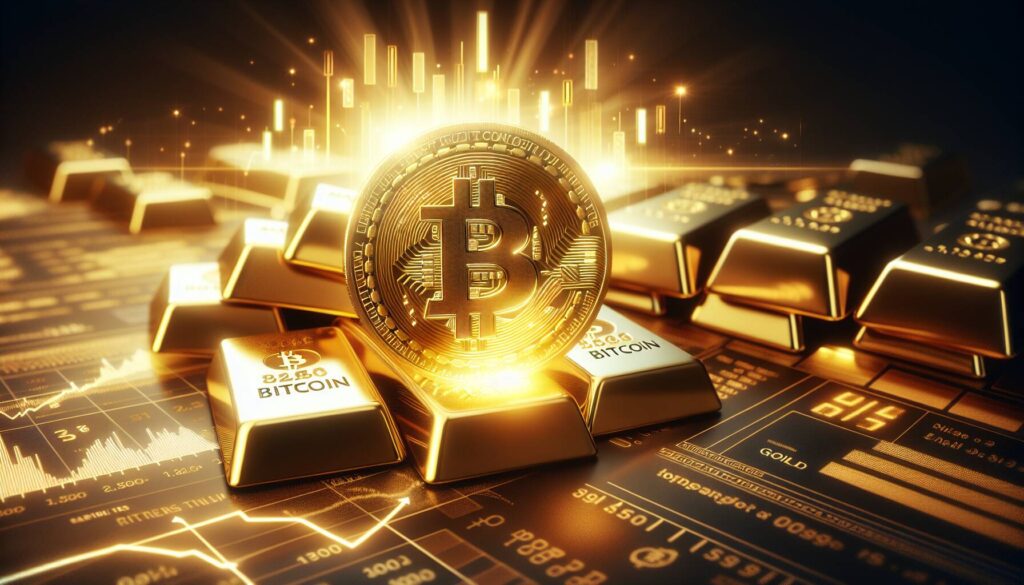In the world of cryptocurrency, Bitcoin has solidified its status as the leading digital asset, now accounting for only 7% of gold’s overall market value. This significant milestone comes just as Bitcoin approaches a remarkable $2 trillion market cap, highlighting its growing importance in the financial landscape.
The rise of Bitcoin and its increasing market cap signals a shift in investor sentiments, with many viewing the cryptocurrency as a new form of digital gold. As Bitcoin continues to gain traction, comparisons to gold, traditionally seen as a haven during economic uncertainty, become more pronounced.
“The connection between Bitcoin and gold has been a focal point for many investors, especially as inflation concerns rise,” says an industry expert. “With Bitcoin’s market cap nearing $2 trillion, it’s clear that digital currency is carving out a larger piece of the financial pie.”
As the cryptocurrency market evolves, observers are keenly watching these developments, pondering the potential implications for both traditional investments and the future of digital finance. The interplay between Bitcoin and gold amidst these market changes will surely continue to be a topic of interest for investors and analysts alike.

Bitcoin’s Market Value Comparison to Gold
Key points regarding the relationship between Bitcoin and gold:
- Current Market Value: Bitcoin approaches a market cap of $2 trillion.
- Proportion to Gold: Bitcoin constitutes only 7% of gold’s total market value.
- Investment Implications: Investors may view Bitcoin as a digital alternative to gold.
- Market Perception: A growing adoption of Bitcoin could impact its value relative to gold.
- Future Trends: Possible shifts in asset allocation affecting both Bitcoin and gold prices.
Understanding these dynamics can influence investment decisions and portfolio strategies.
Bitcoin’s Market Surge: The New Gold Standard?
In the ever-evolving landscape of digital currencies, Bitcoin’s current trajectory presents intriguing comparisons to traditional gold investments. With Bitcoin’s market capitalization approaching the $2 trillion mark, it now represents merely 7% of gold’s total market value. This significant figure positions Bitcoin as a formidable competitor in the precious metals arena, highlighting both its advantages and potential drawbacks.
Competitive Advantages: One of Bitcoin’s primary advantages is its liquidity and accessibility. Unlike gold, which requires physical storage and handling, Bitcoin allows for swift transactions across the globe, appealing to tech-savvy investors and younger generations looking for modern investment options. Furthermore, Bitcoin’s finite supply—capped at 21 million coins—creates scarcity, which could drive demand as traditional currencies face inflationary pressures. This scarcity aspect positions Bitcoin as a compelling hedge against economic uncertainty, just like gold has been for centuries.
Competitive Disadvantages: However, Bitcoin is not without its challenges. The cryptocurrency is often criticized for its volatility, which can deter more conservative investors who prioritize stability. Additionally, regulatory scrutiny is increasing as governments around the world seek to establish a framework for digital currencies. This uncertainty could pose risks for Bitcoin’s adoption as a mainstream investment vehicle compared to the well-established market for gold.
Investors, particularly those seeking innovative and high-risk opportunities, may find Bitcoin to be a valuable addition to their portfolios. On the other hand, traditional investors who are more risk-averse might struggle with incorporating Bitcoin due to its unpredictable nature. The juxtaposition of these assets suggests that while Bitcoin seeks to carve out a significant niche, it may also face challenges disrupting the longstanding forte of gold in the financial markets.

















